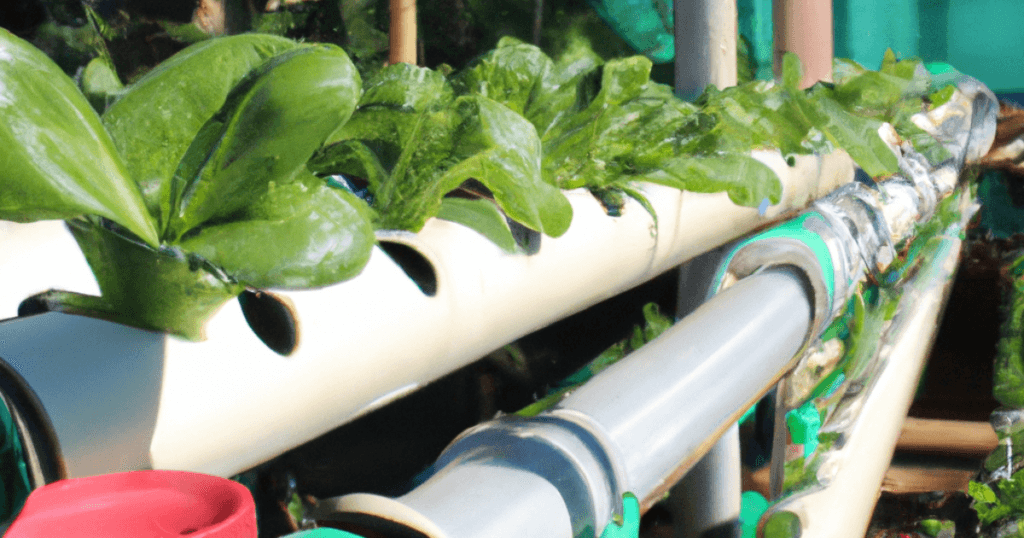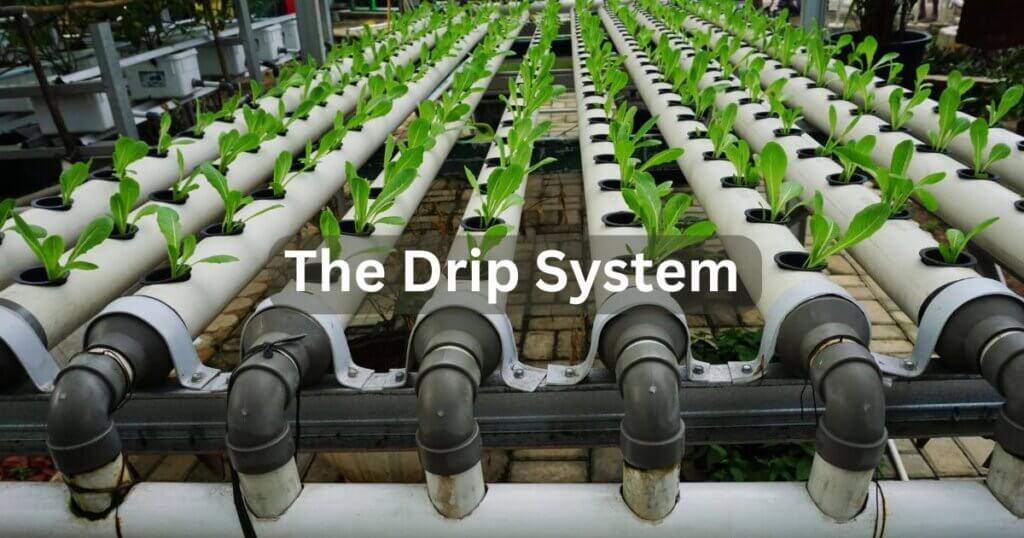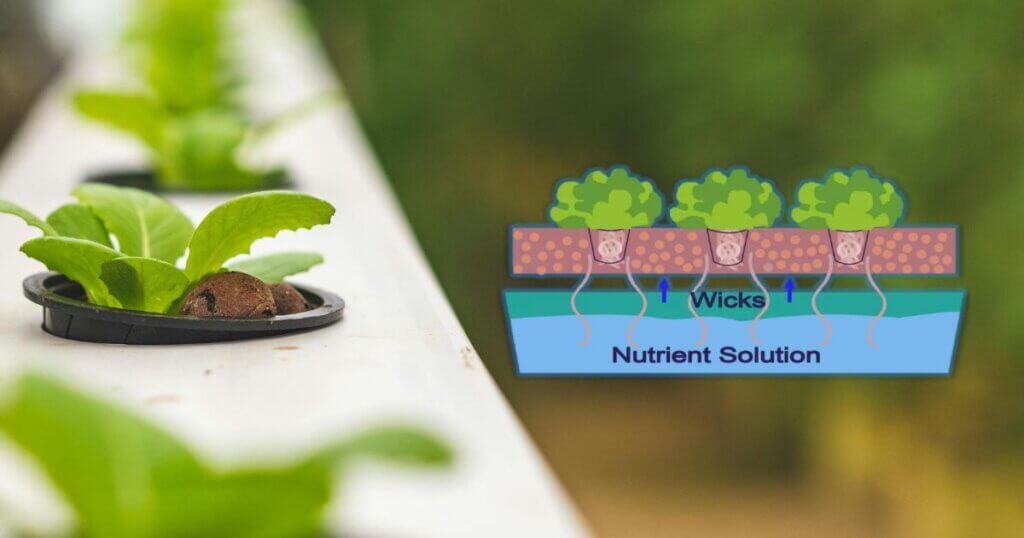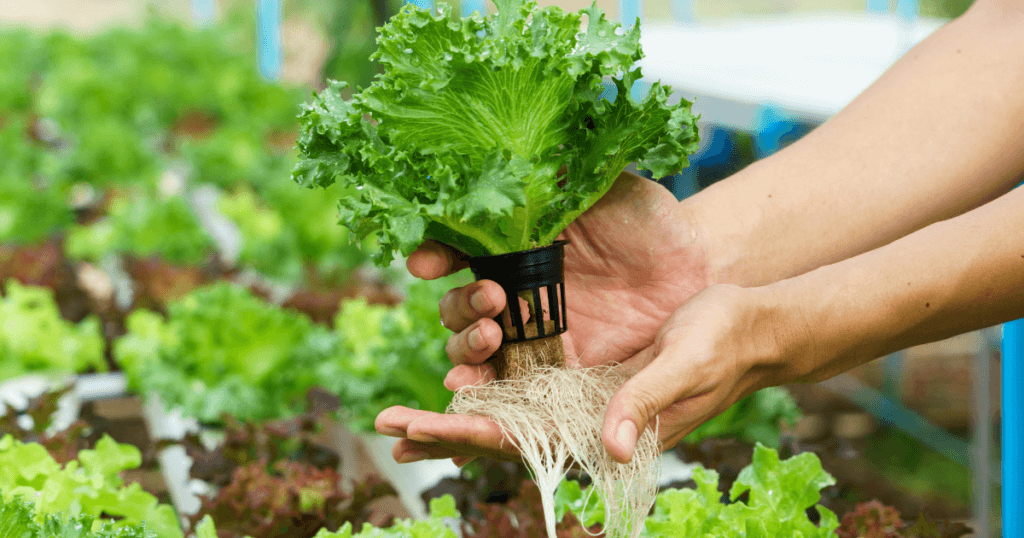Hydroponic Farming Methods Demystified

Some of the links in this post are affiliate links. As an Amazon Associate, we earn a referral fee from qualifying purchases—at no extra cost to you.
Welcome to the world of hydroponic farming! This comprehensive guide will demystify hydroponic farming methods and provide you with all the information you need to get started. Whether you’re a beginner or an experienced gardener, this article will cover everything from the basics of hydroponics to advanced techniques, giving you a solid foundation to grow your thriving hydroponic garden.
Table of Contents
What is Hydroponic Farming?
Hydroponic farming is a method of growing plants without soil. Instead, plants are grown in a nutrient-rich water solution, allowing them to receive the essential elements they need for growth through their root systems. This soilless farming technique has gained popularity recently due to its numerous advantages over traditional soil-based agriculture.
Benefits of Hydroponic Farming
Hydroponic farming offers several significant benefits, making it an attractive option for home gardeners and commercial growers. Some of the key advantages include:
- Water Efficiency: Hydroponic systems use significantly less water than conventional farming methods. The water is recirculated within the system, reducing water waste.
- Space Efficiency: Hydroponics allows plants to be grown vertically, maximizing space utilization. This makes it suitable for urban farming and areas with limited land availability.
- Faster Growth and Higher Yields: Plants in hydroponic systems grow faster and yield higher than traditional farming. The controlled environment optimizes plant growth conditions.
- Year-Round Production: With hydroponics, you can grow plants year-round, regardless of the external climate. This provides a consistent supply of fresh produce.
- Reduced Dependency on Chemicals: Hydroponics minimizes the need for pesticides and herbicides, leading to cleaner and healthier produce.
Setting Up Your Hydroponic System
You’ll need to set up a suitable system to start your hydroponic garden. Here are the basic components required:
- Growing Trays: These are containers where the plants will be placed. They should have holes to allow the roots to access the nutrient solution.
- Reservoir: The reservoir holds the nutrient solution that will feed the plants. It should be lightproof to prevent the growth of algae.
- Nutrient Pump: The pump circulates the nutrient solution from the reservoir to the plants, ensuring they receive a continuous supply of nutrients.
- Growing Medium: The growing medium provides support for the plants’ roots. Common options include perlite, vermiculite, and coconut coir.
- pH and EC Meters: These tools are used to monitor the nutrient solution’s pH level and electrical conductivity (EC). Maintaining the correct pH and nutrient levels is crucial for plant health.
The Soil Moisture Meter 4-in-1 Plant Water Monitor helps you track soil moisture, temperature, light intensity, and fertility all in one device. It syncs via Bluetooth to your phone for real-time monitoring—perfect for beginners and advanced growers looking to dial in optimal conditions from day one.
Different Hydroponic Farming Methods
Various hydroponic farming methods depend on your preferences and the type of plants you want to grow. Each method has its unique characteristics and requirements. Let’s explore some popular hydroponic farming methods:
Deep Water Culture (DWC)
Deep Water Culture, known as the “raft” system, is one of the simplest and most popular hydroponic methods. In this method, plants are suspended in a nutrient solution with their roots submerged in water. Oxygen is provided through air stones or diffusers to prevent root suffocation.
Nutrient Film Technique (NFT)
The Nutrient Film Technique involves the continuous flow of a thin film of nutrient solution over the roots of the plants. The roots are placed in a sloping trough, and the nutrient solution is pumped from a reservoir to the highest end of the trough. Gravity allows the solution to flow down, bathing the roots before returning to the reservoir.
Drip System
In a drip system, a drip emitter is used to supply a slow and steady flow of nutrient solution directly to the plant’s root zones. This method is versatile and can be easily adjusted to meet different plant species’ specific water and nutrient requirements.
Ebb and Flow (Flood and Drain)
The Ebb and Flow system works by periodically flooding the growing trays with nutrient solution and then allowing it to drain back into a reservoir. This cycle of flooding and draining provides the roots with water and nutrients while allowing for oxygen exchange.
Aeroponics
Aeroponics is a high-tech hydroponic method that involves suspending the plants’ roots in the air and misting them with a nutrient solution. This allows the roots maximum exposure to oxygen and nutrients, promoting rapid growth and efficient nutrient uptake.
Wick System
The Wick system is a passive hydroponic method that uses a wick to transport the nutrient solution from a reservoir to the plants’ root zones. The wick acts as a capillary, drawing up the solution to the roots. This method is simple and low-cost but may not suit larger plants or those with high water demands.
Vertical Hydroponics
Vertical hydroponics involves growing plants in a vertical stack or tower, maximizing space utilization. This method is particularly useful for small gardens or indoor setups. The nutrient solution is usually supplied from the top. It flows down through the different layers, nourishing the plants at each level.
Choosing the Right Plants for Hydroponics
While many plants can be grown using hydroponics, some are more suited to this method than others. Leafy greens, like lettuce, spinach, and kale, are popular for beginners. Herbs like basil, parsley, and mint also thrive in hydroponic systems. Additionally, more advanced techniques can successfully grow tomatoes, cucumbers, peppers, and strawberries.
Lighting in Hydroponics
Proper lighting is essential for photosynthesis and plant growth in hydroponics. In indoor or low-light environments, artificial lighting provides the necessary light spectrum for plants. LED grow lights are the preferred choice due to their energy efficiency, longevity, and customizable light spectrums that can be tailored to specific plant needs.
The VIPARSPECTRA LED Grow Light delivers a full light spectrum ideal for all stages of plant growth. It’s energy-efficient, has customizable settings, and is designed for indoor gardening setups.
pH and EC Control
Maintaining the correct pH and electrical conductivity (EC) levels in the nutrient solution is crucial for the success of your hydroponic system. The pH level affects nutrient availability to the plants. In contrast, the EC level indicates the solution’s dissolved salt concentration.
The ideal pH range for most hydroponic plants is between 5.5 and 6.5. Regular monitoring of the pH level is necessary, and adjustments can be made using pH-up or pH-down solutions. A pH testing kit or pH meter should be used to ensure accuracy.
The EC level measures the total dissolved solids in the nutrient solution. It indicates the concentration of nutrients available to the plants. Different plant species have varying nutrient requirements, so monitoring and adjusting the EC level is essential. EC meters measure the EC level, and nutrient solutions can be adjusted by adding or diluting nutrients.
The Bluelab Combo Meter is a premium tool for accurately measuring pH, electrical conductivity (EC), and temperature in your nutrient solution. It’s portable, easy to use, and perfect for daily monitoring.
Managing Pests and Diseases in Hydroponics
While hydroponics can reduce the risk of pests and diseases compared to soil-based farming, it’s still important to implement proper pest and disease management strategies. Here are some tips to keep your hydroponic system pest-free:
- Maintain a clean and sterile environment: Regularly clean the growing trays, reservoir, and equipment to prevent algae or bacteria buildup.
- Monitor plants for signs of pests or diseases: Inspect your plants regularly for any pest infestation or disease symptoms. Early detection allows for prompt treatment.
- Implement biological controls: Beneficial insects, such as ladybugs and predatory mites, can be introduced to control pests naturally. Additionally, organic pesticides specifically formulated for hydroponics can be used if necessary.
- Practice good hygiene: Avoid cross-contamination by washing your hands before working with the plants and using clean tools and equipment.
- Quarantine new plants: When introducing new plants to your hydroponic system, quarantine them to ensure they are pest and disease-free before integrating them with the rest of your crops.
Myco Bliss Mycorrhizal Fungi is a concentrated mix of five powerful strains that promote nutrient uptake, root development, and resistance to stress or pathogens.
The Globe Hydrogen Peroxide 3% Spray Bottle is a safe and effective disinfectant for cleaning your hydroponic equipment, trays, and reservoirs to prevent algae and bacterial growth.
Harvesting and Maintenance
Harvesting in hydroponics is similar to traditional farming, with some minor differences. Here are some general guidelines:
- Harvesting time varies depending on the plant species and desired maturity. Follow the specific recommendations for each crop.
- Use clean, sharp tools to harvest the plants, minimizing damage to the remaining plants.
- After harvesting, empty and clean the growing trays, replace the nutrient solution, and ensure the system is well-maintained for the next crop cycle.
Scaling Up Your Hydroponic Farm
Once you’ve gained experience and success with your hydroponic system, consider scaling up your operation. Here are a few tips to help you expand your hydroponic farm:
- Plan your expansion: Determine the space, resources, and equipment needed for the increased production. Consider factors such as lighting, ventilation, and water supply.
- Gradual expansion: Start small and gradually increase the number of plants or the size of your system. This allows you to adapt and learn from each expansion phase.
- Automation and technology: Explore advanced technologies such as automated nutrient dosing systems, climate control systems, and data monitoring tools to optimize productivity and efficiency.
- Market research: Identify potential markets for your hydroponic produce and assess demand. Establish relationships with local restaurants, farmers’ markets, or community-supported agriculture (CSA) programs.
Advanced Techniques and Innovations in Hydroponics
Hydroponics is a constantly evolving field, with ongoing advancements and innovative techniques being developed. Some of the advanced techniques and innovations include:
- Aquaponics: Combining hydroponics with aquaculture, where fish waste provides nutrients for the plants.
- Controlled Environment Agriculture (CEA): Using technology to precisely control environmental factors such as temperature, humidity, lighting, and CO2 levels to optimize plant growth and yield.
- Vertical Farming: Utilizing vertical space to grow plants in stacked layers, maximizing productivity in limited areas.
- Smart Irrigation Systems: Implementing automated irrigation systems that adjust water and nutrient delivery based on plant needs and environmental conditions.
- Aeroponic Fog Systems: Using fog to deliver nutrient-rich mist directly to plant roots, promoting rapid growth and efficient nutrient uptake.
- LED Lighting Advancements: Utilizing advanced LED technologies that offer specific light spectrums for different growth stages, improving energy efficiency and plant performance.
- Nutrient Film Technique (NFT) Innovations: Developing variations of NFT systems with enhanced flow dynamics and nutrient delivery mechanisms.
Conclusion
Hydroponic farming methods provide a highly efficient and sustainable approach to growing plants without soil. Hydroponics offers numerous benefits, from small-scale home gardens to large commercial operations, including water efficiency, space utilization, faster growth, and year-round production. You can create a thriving hydroponic garden that yields healthy and abundant crops by understanding the different hydroponic farming methods, choosing the right plants, and implementing proper maintenance and management practices. Embrace the world of hydroponics and unlock the potential to grow fresh, nutritious produce right at your fingertips.
FAQs – Hydroponic Farming Methods
1. What are the startup costs for setting up a hydroponic system?
The initial investment for a hydroponic setup can vary depending on the size and complexity of the system. Small-scale home setups can start at a few hundred dollars, while larger commercial systems can cost several thousand dollars. Costs include the purchase of growing trays, pumps, reservoirs, lights, and the necessary nutrient solution. It’s essential to consider both equipment and operational costs before starting a hydroponic farm.
2. Can hydroponic systems be automated for low-maintenance farming?
Yes, hydroponic systems can be automated to reduce the need for manual intervention. Automation can include automated nutrient dosing, temperature control, light cycles, and water circulation. This helps to reduce labor costs and ensures optimal growing conditions without requiring constant supervision, making it ideal for both home gardeners and commercial operations.
3. Are there any specific challenges in hydroponic farming compared to traditional soil-based farming?
While hydroponic farming offers numerous benefits, it also comes with its own set of challenges. These can include the need for constant monitoring of nutrient and pH levels, risk of system failures (like pump malfunctions), and potential for waterborne diseases if the system isn’t properly maintained. Additionally, hydroponic systems can be more costly to set up and may require specialized knowledge to operate effectively.
4. Can I grow all types of plants using hydroponics?
While many plants thrive in hydroponic systems, not all are suited for this method. Leafy greens, herbs, and smaller fruiting plants (like strawberries or tomatoes) are ideal for hydroponics. Larger or more demanding crops, such as root vegetables like carrots or potatoes, can be more difficult to grow hydroponically due to their need for larger root systems and more space.
5. How do hydroponic systems affect the taste of the crops?
Hydroponic farming can improve the flavor of crops in some cases. Since plants receive consistent, optimized nutrients, they can grow more healthily, leading to better tasting produce. Furthermore, the ability to control the nutrients and growing conditions allows farmers to adjust specific factors (like nitrogen levels) to enhance flavor. However, the taste can also vary depending on the type of plant and the nutrient mix used.
Other Useful Resources Related To Hydroponic Farming Methods
- Hydroponics: How It Works, Benefits & How to Get Started: This article provides an overview of hydroponics, explaining how it works, its benefits, and its potential to address food security challenges. It also discusses the sustainability of hydroponic farming.
- What Are the 6 Types of Hydroponics: Setups and Methods: This resource outlines six different hydroponic systems, such as Deep Water Culture and Nutrient Film Technique, and explains their applications and benefits.
- Hydroponic Farming: Guide for Beginners and Experts: A comprehensive guide that explores the techniques, benefits, and challenges of hydroponic farming, catering to both beginners and experienced growers.
- Top 5 Methods for Hydroponic Growing: This article highlights five popular hydroponic growing methods, including Wick Systems and Drip Systems, and provides insights into their functionality and suitability for different needs.
- Hydroponic Systems and Techniques: A detailed explanation of various hydroponic systems, focusing on their design, efficiency, and the types of plants best suited for each method.








